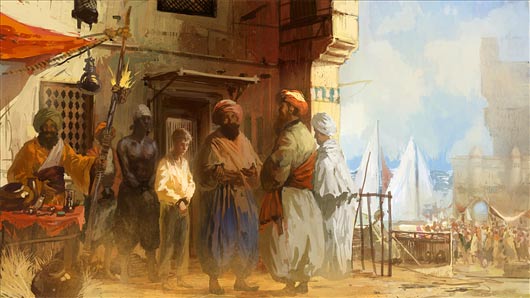The Barbary Slave Trade

From 1500 to the middle of the 19th century, a brisk caucasian slave trade prospered in slave markets along the Barbary Coast of North Africa, including the Ottoman province of Algeria, Tunisia and Tripolitania, as well as the independent sultanate of Morocco.
Barbary Pirates
From bases along the Barbary Coast, pirates made a habit of raiding ships traversing the Mediterranean, as well as the northern and western coasts of Africa, plundering their cargo and enslaving the unfortunate people aboard.
To shed light on the pervasiveness of the problem, between 1609 and 1616, England alone lost 466 merchant ships to Barbary pirates. Once the pirates realized how much money Muslim men would pay for non-Muslim women as ornaments in their harems, pirates expanded their shopping grounds to include coastal towns in Italy, Spain, France and England, sometimes foraging as far north as the Netherlands and Iceland.
Settlements such as Baltimore in Ireland were completely abandoned following one raid, not to be resettled until many years into the future. Slavery victims who had family money or wealthy friends were generally held for ransom, including the author Cervantes, who was held for almost five years from 1575 to 1580.
Captives who converted to Islam were generally freed as a loophole since the enslavement of Muslims was strictly forbidden by Islamic law.
The Barbary Wars
The practice of white slavery declined after Sweden and the United States defeated the Barbary States in the Barbary Wars of 1800 to 1815. English and Dutch warships further curtailed the practice in 1816, when they delivered a punishing nine-hour bombardment of Algiers, leading to the State’s eventual surrender.
The last of the white slave trade ended for good after the French conquest of Algeria from 1830, but not before an approximate 1.2 million unfortunate Caucasians found themselves enslaved in Africa.
